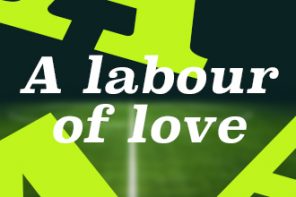In a game now awash with overseas players, it’s difficult to imagine an all-English side winning the FA Cup and a European trophy in successive seasons.
But that’s exactly what happened to West Ham in a regrettably brief period during the 1960s.
It was an achievement comparable to Celtic’s Lisbon Lions of 1967 when the Hoops lifted the European Cup with a team comprised of Scottish-born players. Not only that, but 10 members of the side were born and raised within Glasgow’s city limits.
When the Hammers won the European Cup Winners Cup in 1965, they fielded nine Londoners in all-English line-up. In many respects, it was a greater achievement for a smaller club like West Ham, who were fishing in the same talent pool as Arsenal and Spurs.
In May 1964, the club were on the threshold of an exciting new era. Left half Bobby Moore was captain of England and just voted Football Writers’ Player of the Year.
West Ham had reached their first FA Cup Final in 41 years and, like the White Horse final of 1923, faced Lancastrian opposition. Preston North End had a rich history and narrowly missed out on promotion.
The Lilywhites had overcome a moderate Swansea side in the semi-final; while the Hammers defeated Manchester United at a rain sodden Hillsborough. To beat a side that featured Bobby Charlton and Denis Law gave Moore’s men a competitive sharpness, although West Ham had finished a disappointing 14th in the top flight that season. It was southern style versus northern grit and a test of who could best handle the big occasion.
The Hammers line-up that day consisted a host of famous names who were also products of the club’s youth programme: Moore, Geoff Hurst, Johnny Sissons, Ronnie Boyce, Eddie Bovington, Ken Brown, Jack Burkett and John Bond. All were born in England and nurtured in the club’s traditional catchment areas of East London and Essex. The Academy of Football was born and ready to unleash its first wave of graduates.
Only three players were signed from other clubs. Centre forward Johnny Byrne was a record £65,000 signing from Crystal Palace. Greenwich-born winger Peter Brabrook was bought from Chelsea for £35,000 and goalie Jim Standen joined from Luton Town. Byrne hailed from leafy West Horsley while Standen was a native of Edmonton in North London.
All three ‘outsiders’ were signed in 1962 and was the closest West Ham got to signing ‘foreign’ players. Even Brabrook was a player who slipped through the net. He played for Redbridge FC but initially signed for Chelsea.
Manager Ron Greenwood was born in Burnley but had the demeanour of a Home Counties schoolmaster. He was appointed manager three years previously and packed an impressive CV.
Aside from coaching Arsenal, Greenwood managed the England Youth and under-23 sides; so was well placed to nurture the blossoming talent of Bobby Moore.
In his autobiography, Sincerely Yours, Greenwood described their first encounter at a Lilleshall training session. He was surprised to see Moore playing at left half and enquired, “I saw you playing for London Grammar last season but didn’t you play at centre half?”. Moore nodded and replied his club West Ham preferred him at left half.
Greenwood thought he was brilliant and said, “I’d like you to captain our side at centre half”. Moore shrugged with youthful nonchalance “suits me fine”. And so the swap was made.
It was the start of a unique relationship as the future World Cup winner gained 18 youth caps for England. Greenwood didn’t know it but had just found the alpha male for his London Lions.
If the academy was Greenwood’s vision then the architect was chief scout Wally St.Pier. A former Hammers’ half back, he was a vital element in the club’s rise to prominence. By 1963, West Ham had won the FA Youth Cup with an excellent team that featured Johnny Sissons and Harry Redknapp. Four members of the side that defeated Liverpool had already represented England at youth level. The portents were good and drew a sense of confidence from all those round them.
On cup final day, the Hammers were hot favourites and boasted the natural glamour that put them in the spotlight.
For the record, Preston fielded seven Englishmen, three Scotsmen and one Irishman. It sounded like a poor music hall joke but it was Preston who made the stronger start. They went ahead in the 10th minute when Jim Standen fumbled a shot from Alex Dawson and Doug Holden buried the loose ball. The equaliser arrived courtesy of Hayes-born Sissons. The 18-year-old became the youngest goalscorer in an FA Cup Final following a slick one-two with Byrne. By half-time, West Ham were trailing again after Alex Dawson executed a powerful header. Hurst dragged the Hammers back to parity early in the second half with his 26th goal of the season.
It was appropriate the winner should be scored by the only player who was born and raised in West Ham. Ronnie Boyce was known as Ticker because he was quite simply the heartbeat of the team. With the final seconds dying away extra time was highly likely. Boyce was told to sit in the middle of the park but tired legs forced him forward.
He found space in the box and met Brabrook’s delicate cross with quiet precision. Preston had 23 attempts on goal compared to West Ham’s 16; in many respects they were the better team. But the Londoners had scrapped and clawed their way to victory. The exotica of European football beckoned for the first time and it was an opportunity they would not waste.
The European Cup Winners Cup was UEFA’s youngest child, arriving in 1960. Spurs thrashed Athletico Madrid 5-1 in the 1963 final and became the first British club to win a European trophy. The Hammers travelled from Ghent to Prague and Lausanne on the way to a semi-final against Real Zaragoza.
The Spaniards looked sleek and dangerous, a regular top-four side and holders of the Inter-City Fairs Cup. Over two legs it was a bruising war of attrition. The Hammers squeezed through 3-2 on aggregate, but would save their best football for the final.
The football gods winked knowingly as the final was played at Wembley, with seven members of West Ham’s FA Cup winning side featuring in the line-up.
There were four newbies who weren’t really new at all. Joe Kirkup came in for Bond at right back and, although born in Sunderland, he was another product of the Academy and made his debut in 1958. Plaistow-born Martin Peters replaced Bovington at right half and was a gifted all-round footballer who had already represented England at three levels. Peters was scapegoated for the infamous 8-2 defeat against Blackburn Rovers on Boxing Day 1963, ultimately losing his place, and had something to prove.
Centre forward Byrne picked up a knee injury playing for England against Scotland and was subsequently ruled out of the final. Byrne was replaced by 22-year old Brian Dear who like Peters came from Plaistow. Dear’s selection represented yet more symmetry with the Academy; he played in the same youth team as Peters and Boyce and their understanding stretched back at least five years.
The final newbie was Alan Sealey who came from Hampton in the sleepy London Borough of Richmond. He was signed from East London neighbours Leyton Orient in April 1961. Sealey could play in a variety of forward positions, but for the final had replaced Brabrook at outside right.
Their opponents Munich 1860 were cast in the same stylistic mould and favoured flowing, attacking one-touch football. Munich fielded an all-German line-up, save for two Serbians.
For West Ham, the 1964 final was a dress rehearsal but this would be the gala performance. The pace and movement of two evenly matched sides was breathtaking to watch. However, the game remained goalless for over an hour.
But then Boyce, so often the unsung hero, slipped an inch-perfect pass through to Sealey, who rammed home a thunderous strike. Moore inevitably claimed an assist for the Hammers’ second and decisive goal, clipping in an inviting cross that hit Martin Peters and fell to Alan Sealey who duly obliged.
For Ron Greenwood it was fulfilment and vindication of how the game should be played. Moore later observed that “it felt like winning something with your school team”.
The Times journalist Matt Dickinson offered a concise summary in his brilliant book, Bobby Moore: The Man in Full, when he reasoned, “West Ham had won a European trophy not just with 11 Englishmen but with a squad largely raised on the working class streets of the East End”.
The Hammers had certainly earned their place to sit at the same table as Celtic’s Lisbon Lions.






